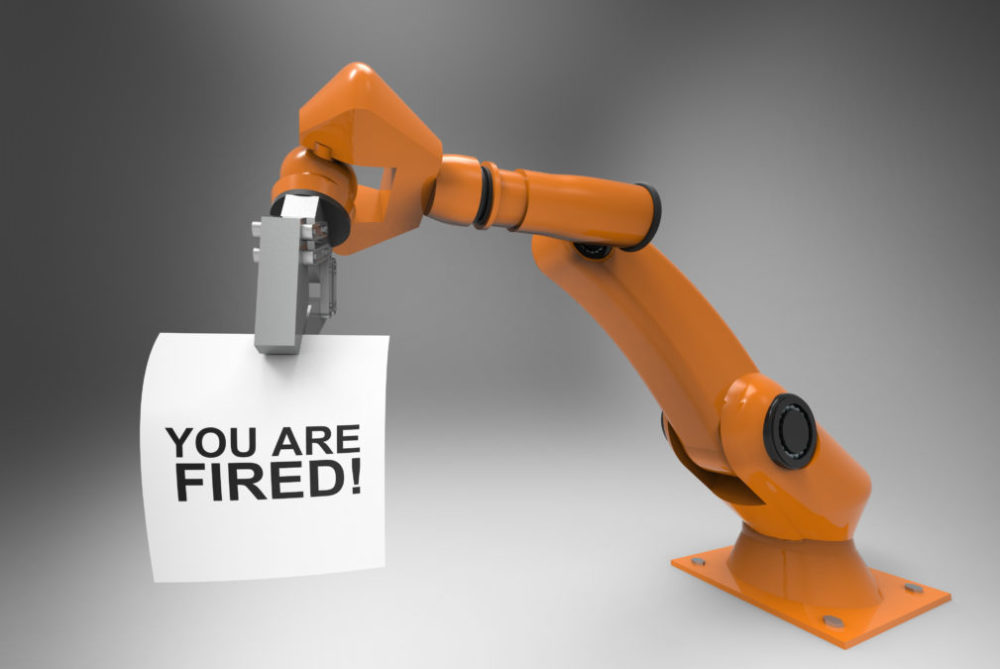This year’s Harvey Nash/KPMG CIO Survey, that takes in the views of over 3,600 IT leaders around the world, actually provides some qualified good news (assuming you are on the ‘human side’): while the typical respondent believes that up to 10% of their workforce will be replaced by technology in the next five years, the majority (69%) also believe that new jobs will appear to compensate for these losses.
Perhaps it is easy to get seduced by what I call the Hollywood view of the future, in which robots are everywhere and an automated sci-fi world surrounds the human race who are left wondering what to do with themselves.
The reality is, however, that the future is going to be more nuanced, and robotics will be more embedded than outwardly visible. It will be a case of evolution, not revolution. But that evolution has already started. AI is already changing our landscape and is happening in the here and now. Automation is up 15% as a board priority in this year’s survey and many roles – both within IT and outside it – are feeling the effects. In IT, roles such as Testing are a prime target. Indeed, any role that has an element of ‘process’ to it that can be written down and sequenced will be in line for automation.
Outside IT, sectors such as insurance are investing heavily in automation, with over half of IT leaders in this sector reporting that they are either piloting or implementing AI/machine learning. Claims processing, policy issuance, administrative tasks – these are all clearly functions ripe for AI. The mortgage industry will also increasingly be affected, where the assessment of applications including income and outgoings analysis and house valuations will all potentially be performed, almost instantly, by technology feeding on big data.
AI won’t destroy jobs it will transform them
The chorus of voices claiming that AI won’t destroy jobs is getting louder
In other words, the ‘threat’ of AI and robotics is by no means only confined to manual workers such as drivers or those working on assembly lines, in factories and in warehouses. A host of median, white collar roles will be in technology’s sights.
None of us can predict the future, especially in our exceptionally fast-moving and volatile modern world. So the exact pace of the spread of AI, and just how far it will reach, is impossible for anyone to know. In this year’s CIO Survey, while the majority predicted 10% of jobs will be affected in the next five years, a third estimated it at 20%. That 10% difference amounts to a large number of roles. What’s more, while 69% believe new jobs will compensate, that leaves nearly a third of IT leaders who are not so optimistic.
There are a number of complex variables that come into play here. Firstly, we have to factor in the political dimension. The march of technology is by no means always unopposed. Look at Huawei and the problems they are encountering right now for geopolitical reasons. Look at Uber, who are constantly being banned, or threatened with bans, in different cities. Technology is constantly coming up against the human factor, that our politicians feel they must champion. Mass automation and job losses would not be a winning political ticket.
Thank God it’s Monday: Can automation really make us love our jobs again?
We also have to factor in the costs. Whilst these can be expected to fall in the coming years, especially as cloud-based AI develops, at the moment investing in AI and automation is expensive. It has been estimated that to build a ‘robot’ capable of the same functions as a four-year-old (which are actually fairly limited in terms of dexterity) costs around $30,000. That is more than the average wage in most of the West. On that basis, people remain a cheaper option than robotics – for now.
Is Computer Engineering Really Going to Be Automated?
Where does this leave IT? Some roles will go as IT automates itself. But at the same time, many new roles will be created. What we’re seeing at the moment in the market is a particular demand for change managers, project management-based roles focused on automating manual or labour-based processes. There will continue to be a huge need for coders, software writers, data scientists and analysts, design engineers, digital transformation specialists – the list goes on. Even if some of these roles become automated themselves, there will always be a need for human IT specialists designing, monitoring, testing and validating what the AI is doing.
The CIO and their IT team will need to be at the heart of it all, working with the business and helping shape the AI strategy. Innovation will be the lifeblood of any business, and IT will be its enabler. To achieve this, businesses are focusing on building a ‘core’ of permanent IT and transformation staff who are highly skilled, adaptable and focused on innovating.
As processes become automated, it is the quality of the design that will be key. IT will be crucial to that design: its future seems assured.
The Harvey Nash/KPMG CIO Survey 2019 was launched today. To register for a copy of the report, click here.

Written by Albert Ellis, CEO of global tech recruiter, Harvey Nash.







